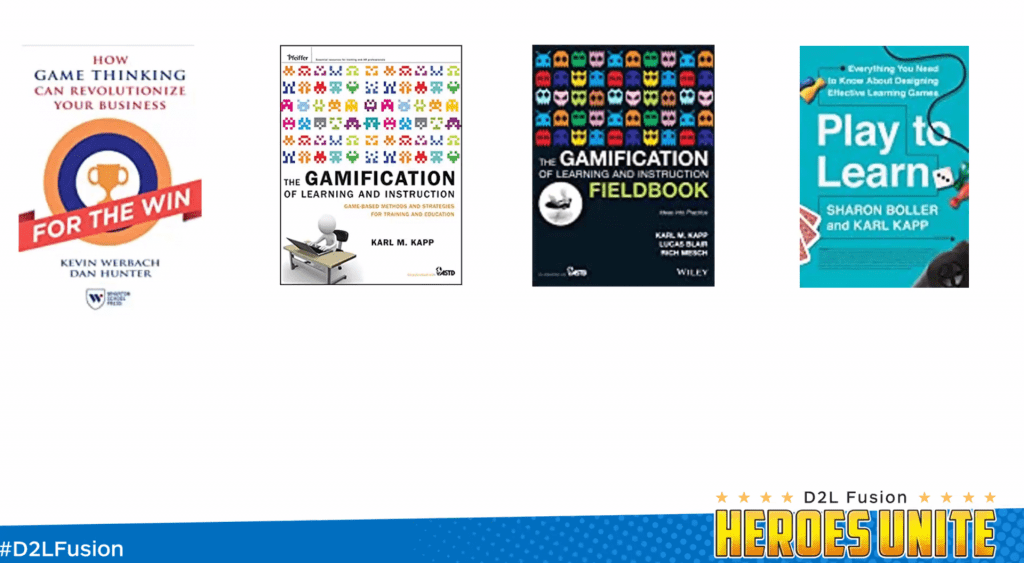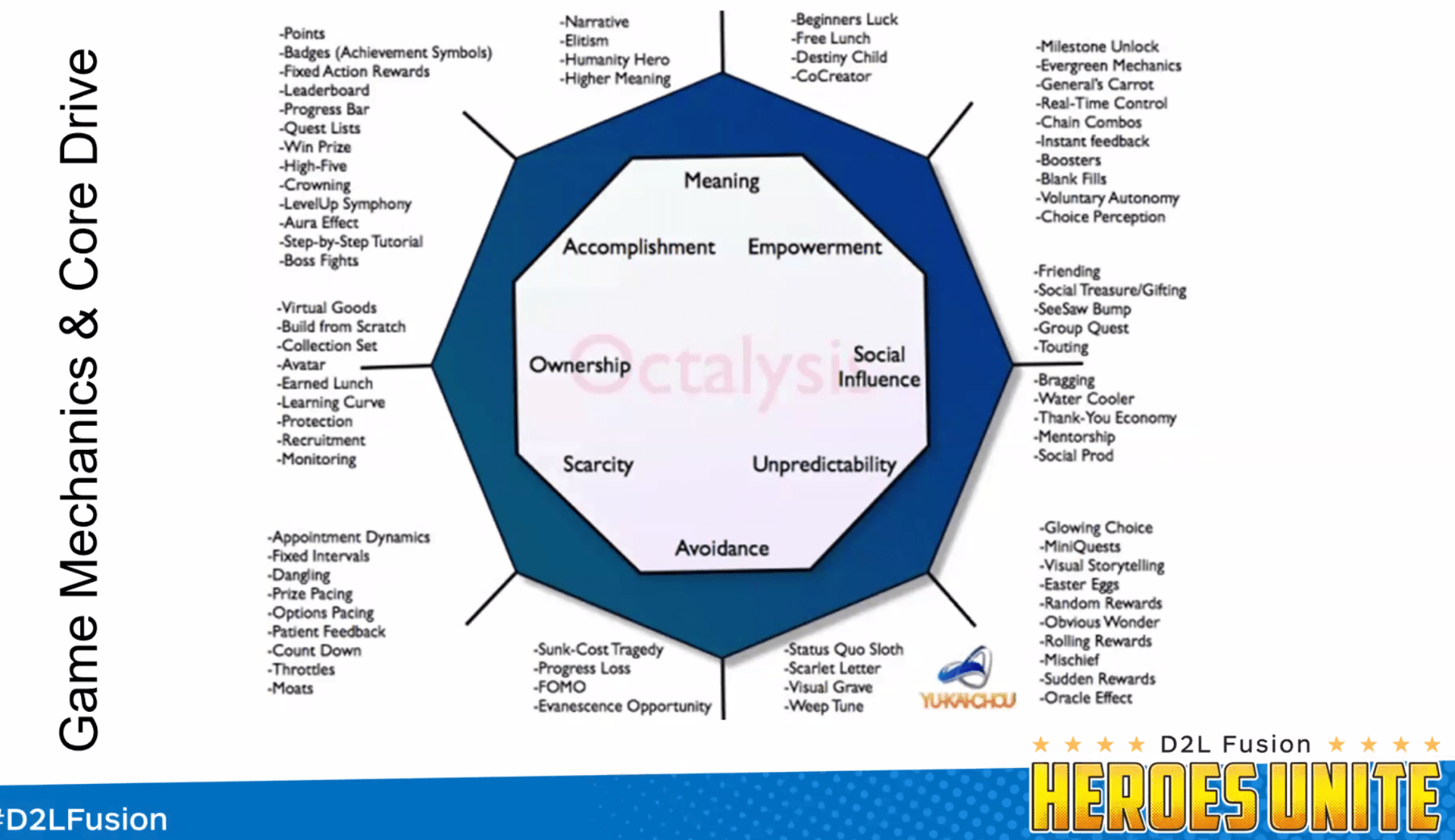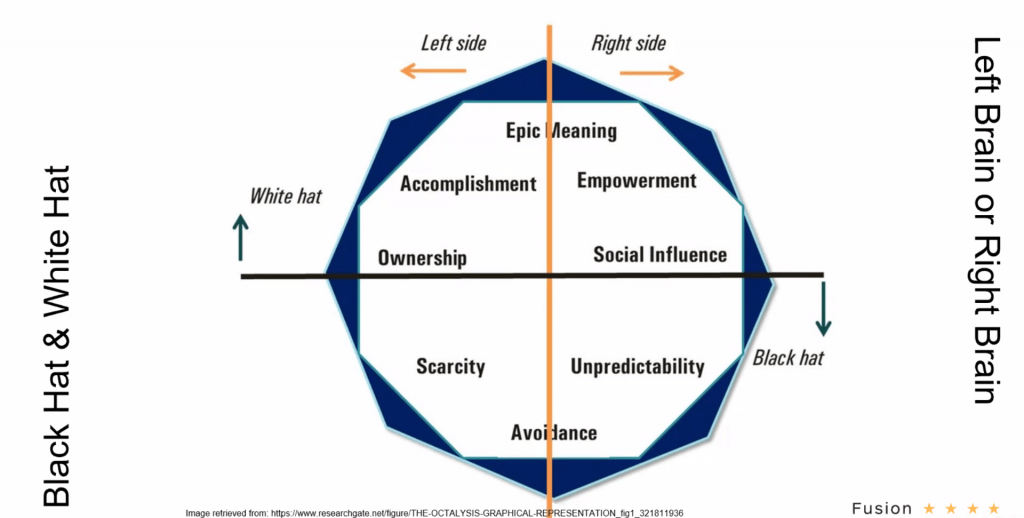Searching for "GIS"
+++++++++++++
more on special education in this IMS blog
https://blog.stcloudstate.edu/ims?s=special+education
Software developed by University College London & UC Berkeley can identify ‘fake news’ sites with 90% accuracy from r/Futurology
Machine learning tool deUC Berveloped to detect fake news domains when they register
http://www.businessmole.com/tool-developed-by-university-college-london-can-identify-fake-news-sites-when-they-are-registered/
Al is not lost though, as academics from UCL and several other institutions have developed a tool that may help us separate the fact from fiction. They have designed a machine learning tool which can cite domains that were created to spread what has now commonly become known as ‘fake news’.
+++++++++
more on fake news in this IMS blog
https://blog.stcloudstate.edu/ims?s=fake+news
“Trying to debunk misinformation after it has spread is like shutting the barn door after the horse has bolted. By pre-bunking, we aim to stop the spread of fake news in the first place,” said Dr Sander van der Linden, Director of the Cambridge Social Decision-Making lab and senior author of the new study.Game combats political misinformation by letting players undermine democracy: A short online game in which players are recruited as a “Chief Disinformation Officer” and use tactics like trolling to sabotage elections in a peaceful town has shown to reduce susceptibility to political misinformation from r/science
https://www.cam.ac.uk/research/news/game-combats-political-misinformation-by-letting-players-undermine-democracy
Game combats political misinformation by letting players undermine democracy
The free-to-play Harmony Square is released to the public today, along with a study on its effectiveness published in the Harvard Misinformation Review
It has been created by University of Cambridge psychologists with support from the US Department of State’s Global Engagement Center and Department of Homeland Security Cybersecurity and Infrastructure Security Agency (CISA).
+++++++++++++++
more on disinformation in this IMS blog
https://blog.stcloudstate.edu/ims?s=disinformation
Gamification Network: Exploring Gamification through the Octalysis Lens
Mary Nunaley
Karl Kapp The Gamification of Learning and Instruction
Kevin Werbach, Dan Hunter How Game Thinking Can Revolutionize Your Business
Yu-Kai Chou gamification design. Octalysis. https://www.gish.com/
8 core drives:
Meaning
Accomplishment
Empowerment
Ownership
Social Influence. social media, instagram influencers
Scarcity: scarcity with homework deadlines, coupons at the store
Unpredictability and curiosity. scavenger hunt in courses. careful when teaching.
Avoidance


Octalysis – the complete Gamification framework
Webinars
motivation

+++++++++++++++
https://yukaichou.com/octalysis-tool/
+++++++++++++++
https://island.octalysisprime.com/
+++++++++++++
https://yukaichou.com/
+++++++++++++
Home
++++++++++++++
++++++++++++
more on gamification in this IMS blog
https://blog.stcloudstate.edu/ims?s=gamification
Twitter Continues to Face Scrutiny Amidst Political Backlash Due to High-Profile Hack
By IGI Global on Oct 22, 2020
the New York Department of Financial Services (DFS) has
released an investigation report on Twitter. This report outlines the high profile attack that overtook popular celebrity accounts (including former U.S. president Barack Obama, celebrity and businesswoman Kim Kardashian West, Amazon mogul Jeff Bezos, and other notable celebrities) and led to the theft of US$ 118,000 in bitcoin.
DFS has called on the U.S. government to regulate social media platforms, such as Twitter and Facebook, on cybersecurity, along with antitrust and content moderation.
This is an excerpt from my 2018 book chapter: https://www.academia.edu/41628237/Chapter_12_VR_AR_and_Video_360_A_Case_Study_Towards_New_Realities_in_Education_by_Plamen_Miltenoff
Among a myriad of other definitions, Noor (2016) describes Virtual Reality (VR) as “a computer generated environment that can simulate physical presence in places in the real world or imagined worlds. The user wears a headset and through specialized software and sensors is immersed in 360-degree views of simulated worlds” (p. 34).
Noor, Ahmed. 2016. “The Hololens Revolution.” Mechanical Engineering 138(10):30-35.
Weiss and colleagues wrote that “Virtual reality typically refers to the use of interactive simulations created with computer hardware and software to present users with opportunities to engage in environments that appear to be and feel similar to real-world objects and events”
Weiss, P. L., Rand, D., Katz, N., & Kizony, R. (2004). Video capture virtual reality as a flexible and effective rehabilitation tool. Journal of NeuroEngineering and Rehabilitation, 1(1), 12. https://doi.org/10.1186/1743-0003-1-12
Henderson defined virtual reality as a “computer based, interactive, multisensory environment that occurs in real time”
Rubin, 2018, p. 28. Virtual reality is an 1. artificial environment that’s 2. immersive enough to convince you that you are 3. actually inside it.
”artificialenvironment ” could mean just about anything. The photograph is an artificial environment of video game is an artificial environment a Pixar movie is an artificial environment the only thing that matters is that it’s not where are you physically are. p. 46 “VR is potentially going to become a direct interface to the subconscious”
- p. 225 Virtual reality: the illusion of an all-enveloping artificial world, created by wearing an opaque display in front of your eyes.
From: https://blog.stcloudstate.edu/ims/2018/11/07/can-xr-help-students-learn/ :
p. 10 “there is not universal agreement on the definitions of these terms or on the scope of these technologies. Also, all of these technologies currently exist in an active marketplace and, as in many rapidly changing markets, there is a tendency for companies to invent neologisms around 3D technology.” p. 11 Virtual reality means that the wearer is completely immersed in a computer simulation.
from: https://blog.stcloudstate.edu/ims/2018/11/07/can-xr-help-students-learn/
There is no necessary distinction between AR and VR; indeed, much research
on the subject is based on a conception of a “virtuality continuum” from entirely
real to entirely virtual, where AR lies somewhere between those ends of the
spectrum. Paul Milgram and Fumio Kishino, “A Taxonomy of Mixed Reality Visual Displays,” IEICE Transactions on Information Systems, vol. E77-D, no. 12 (1994); Steve Mann, “Through the Glass, Lightly,” IEEE Technology and Society Magazine 31, no. 3 (2012): 10–14.
++++++++++++++++++++++
Among a myriad of other definitions, Noor (2016) describes Virtual Reality (VR) as “a computer generated environment that can simulate physical presence in places in the real world or imagined worlds. The user wears a headset and through specialized software and sensors is immersed in 360-degree views of simulated worlds” (p. 34). Weiss and colleagues wrote that “Virtual reality typically refers to the use of interactive simulations created with computer hardware and software to present users with opportunities to engage in environments that appear to be and feel similar to real-world objects and events.”
Rubin takes a rather broad approach ascribing to VR: 1. artificial environment that’s 2. immersive enough to convince you that you are 3. actually inside it. (p. 28) and further asserts “VR is potentially going to become a direct interface to the subconscious” (p. 46).
Most importantly, as Pomeranz (2018) asserts, “there is not universal agreement on the definitions of these terms or on the scope of these technologies. Also, all of these technologies currently exist in an active marketplace and, as in many rapidly changing markets, there is a tendency for companies to invent neologisms.” (p. 10)
Noor, Ahmed. 2016. “The Hololens Revolution.” Mechanical Engineering 138(10):30-35.
Pomerantz, J. (2018). Learning in Three Dimensions: Report on the EDUCAUSE/HP Campus of the Future Project (Louisville, CO; ECAR Research Report, p. 57). https://library.educause.edu/~/media/files/library/2018/8/ers1805.pdf
Rubin, P. (2018). Future Presence: How Virtual Reality Is Changing Human Connection, Intimacy, and the Limits of Ordinary Life (Illustrated edition). HarperOne.
Weiss, P. L., Rand, D., Katz, N., & Kizony, R. (2004). Video capture virtual reality as a flexible and effective rehabilitation tool. Journal of NeuroEngineering and Rehabilitation, 1(1), 12. https://doi.org/10.1186/1743-0003-1-12
What the Stockdale Paradox Tells Us About Crisis Leadership
https://hbswk.hbs.edu/item/what-the-stockdale-paradox-tells-us-about-crisis-leadership
“I lived on a day-to-day basis. … [M]ost guys thought it was really better for everybody to be an optimist. I wasn’t naturally that way; I knew too much about the politics of Asia when I got shot down. I think there was a lot of damage done by optimists; other writers from other wars share that opinion. The problem is, some people believe what professional optimists are passing out and come unglued when their predictions don’t work out.”
The Stockdale Paradox—have faith, but confront reality—can be seen in slightly different forms in many cultures.
Stockdale himself was a follower of the ancient Greek Stoic philosophers, who were noted for their concern with understanding reality correctly and shaping one’s response to it optimally. The maxim of Epictetus, “What, then, is to be done? To make the best of what is in our power, and take the rest as it naturally happens,” has similarities to both Buddhist doctrine and the Alcoholics Anonymous Serenity Prayer. (“God, grant me the serenity to accept the things I cannot change, courage to change the things I can, and wisdom to know the difference”). Therapy techniques such as radical acceptance similarly emphasize the point of letting go of desires and beliefs about what should be and seeing reality as it is.
In the words of Marsha Linehan, the founder of radical acceptance: “Radical acceptance doesn’t mean you don’t try to change things … You can’t change anything if you don’t accept it, because if you don’t accept it, you’ll try to change something else that you think is reality.”
Research by Leach and others indicates that people who survive disasters are able to regain cognitive function quickly after the event, assess their new environment accurately, and take goal-directed action to survive within it. This is the balance that the Stockdale Paradox facilitates: the realism to let go of intrinsic survival mechanisms and the deep-seated faith to learn the new ones.
the pattern of human response to disasters has been shown to be remarkably consistent across cultures, and for disasters of many different causes, effects, and durations, from earthquakes to shipwrecks to kidnapping.
Advice and exercises for leaders
Begin meetings by having each person introduce themselves by their name, job title, mission, and their immediate tasks
This provides practical information to rescuers, but also has the effect of bringing people back to themselves and helping them begin to focus again.
Angela Duckworth’s concept of grit may be useful here. By grit, Duckworth does not mean endurance for its own sake, but rather commitment to a high-level goal, purpose, or mission—and the ability to assess and revise lower-level goals and tactics as necessary.
One question should be regularly asked at meetings: “What is something that doesn’t fit in, that doesn’t make sense?”
Normalize admitting these mistakes and analyzing them. Discuss weak spots, harm reduction, and damage control—people will sometimes fall when traveling uncertain terrain, so how can they fall without injuring themselves?
Create ways for your team to surface both their deep faith and their real fears.
In mental contrasting, a person:
- Visualizes a goal and its rewards, and then
- Visualizes what obstacles—including their own behavior—stand between them and their goal. (It is important to do it in this order.)
In their paper on the Stockdale Paradox, authors C. W. Von Bergen and Martin S. Bressler point to previous studies that show when people focus on only positive thoughts about the future, “they literally trick their minds into thinking they have already succeeded and, so, do not need actual efforts to attain something perceived as already acquired.
https://www.npr.org/2020/09/23/916096008/justice-department-proposes-weakening-social-medias-legal-shield
Tech companies largely oppose paring Section 230’s protections, which they say have been essential to the development of the internet. Now with the election just weeks away, some warn that the legislation could make tech platforms reluctant to act on potentially harmful disinformation.
Democratic presidential nominee Joe Biden has said Section 230 should be “revoked”, arguing that tech companies should be held to the same standards as media companies, which can be sued for printing falsehoods.
Sen. Ron Wyden, D-Ore., one of the original authors of Section 230, accused the Trump administration of trying to intimidate tech companies.
+++++++++++++
more on ed tech companies in this IMS blog
https://blog.stcloudstate.edu/ims?s=tech+companies
Hirsch, D. (1991). The deconstruction of literature : criticism after Auschwitz . Brown University Press.
https://mnpals-scs.primo.exlibrisgroup.com/permalink/01MNPALS_SCS/qoo6di/alma990010901510104318
Basement PN98.D43 H57 1991
p. 165 Anti-humanism at the American University
p. 169 Marxism, humanism, and literature in the university
Marx was a student if economic and political forces who believed he was conducting scientific inquiries into social political and economic structures; yes his works, students complain, are not taught at all in the Brown economics and political science departments. Students committed to post modern ways of thinking discover conspiracy in this phenomenon, but it is more likely that the omission is owning to the fact that professional economists do not respect marks as an economist. Those who pursue the study of economics essay science do not consider Marxist economic theories sufficiently scientific, and on the basis of what Dusty a risk of done to the economics of the Soviet union in the peoples Republic of China, which claim to be Marxist states, who can blame the process for being skeptical?
A similar situation exists with regard to Freud. Just as marks is very little taught in political science or economic departments, sort throat is not crowded these days in Department of psychology or psychiatry, and for similar reasons. Though what Freud dead in his own time may have passed for science and though he may have considered himself a scientist, he is not a scientist at all by contemporary standards. If Marxist economics has not produced utopias in Marxist states, so, by the same token, Freudian techniques of analysis have not consistently demonstrated the power to cure the more serious ( or even the most trivial) psychological disorders.
p. 170 If Marxist economics is no longer perceived is a tool that can be used to help solve economic problems, and Freudian analytics techniques are no longer applicable in helping to cure patients with mental disorders, what residue of Marxism and Freudianism remains?
p. 171 though they find an inhospitable climate in the social sciences and in the heart sciences, Marks in Freud have been given a warm home in certain humanities departments committed to postmodern ways of perceiving the world. But they have not found a home there is scientists. They have found a home, rather, as profits, or perhaps more accurately, as gods. And those who espouse Marxian in Freudian views become the “true believers.”
what happens to Marxist and Freudian ideas when they lose their empirical grounding in their power to explain events in the physical world? Free-floating Marxist and Freudian ideas have been fused to established at least one of the foundations of post modernist literature theory and to promulgate an image of the human form it’s a robot controlled by “ideology.”
p. 172. Because ideology works most effectively through its unconscious hold on subjects, it resists being made conscious or explicit. And ideology structures ‘seeing’ in ‘feeling’ before it structures ‘thinking,’ and appears to have no historical or social specificity but to be simply the natural way of perceiving reality.
Other residues of do descientizied Marx and Freud are “the class struggle” in “sublimation.” But the class struggle is Marx conceived it never really took root in American culture.
Even know, empirical sociologists have difficulty in defining what constitutes “a class” in American culture, and in determining where one class ends and another begins.
It is well known that the vast majority of Americans define themselves as middle-class, which then makes it necessary for a sociologist interested in arriving it finally distinctions to divide the middle glass itself into upper, middle, and lower, and so on.
p. 173. Post modern Freudians are forced into similar absurdities. Freud based his theory of sublimation (neurosis-as-the-price-of-culture) on the very rigid Austro-German family, constituted by a strict, punishing, disciplinarian father, a submissive mother, and obedient son, and a subservient daughter. p. 174 Marks in Floyd analyzed Austro-German culture and thought they were analyzing the universe. For them Austro-German culture was universal culture, as it consequently becomes for believing Marxists and Freudians.
p. 179. And what are you, reader?
the humanities are in flux. Liberal democracy, on which the humanities real life for 16 ounce and which day in Torrance sustain, is under attack by ‘humanists”; literary criticism has nothing only become politicized, but politicized against the Vallas of liberal humanism.
p. 190. The Marxist-Gramscian thesis depends on a conspiracy theory according to which the “dominant classes” exert their influence over the “subordinate classes covered” the by means of educational, religious, and other institutions, and ‘ruling groups preempt the high ground of universal morality in truth.” Because the dominant classes dominate the oppressed classes in secrecy, by means of social institutions, de artist must respond to this dominance with symbolic representations.
Disruption, destruction and chaos has become the new way of governing
https://www.theguardian.com/commentisfree/2020/sep/13/tories-new-unscrupulous-politics-misinformation
It is really about how the world now works, and reflective of ideas that first gained ground in the 1980s and 90s. Back then, the French theorist Jean Baudrillard contended that the difference between actuality and mere simulation had long since broken down, a notion encapsulated in the postmodern concept of “hyperreality”.
The sociologist Zygmunt Bauman, in his book Intimations of Postmodernity, summarised Baudrillard’s portrayal of a culture in which “images represent nothing but themselves, information does not inform, [and] desires turn into their own objectives”.
“We live in a world where there is more and more information, and less and less meaning,” wrote Baudrillard in 1981.


